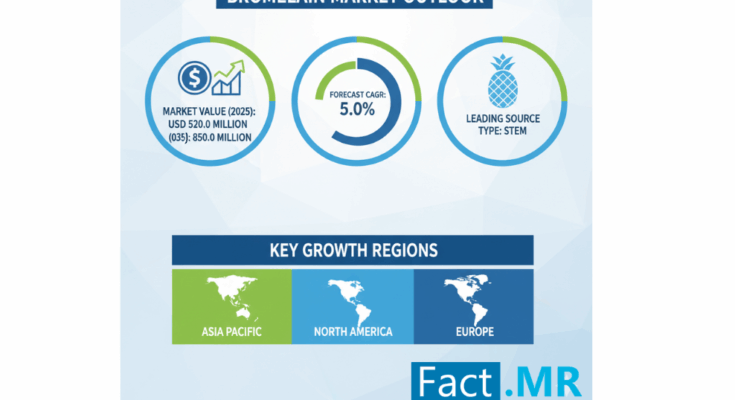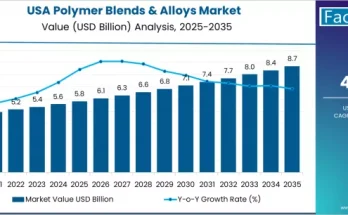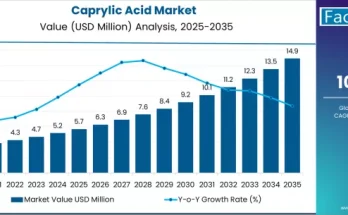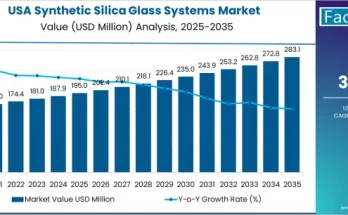The global bromelain market is poised for steady expansion, forecasted to reach USD 850.0 million by 2035, up from USD 520.0 million in 2025, representing an absolute increase of USD 330.0 million and a compound annual growth rate (CAGR) of 5.0% over the forecast period. The growth trajectory reflects a robust demand for natural enzyme solutions, plant-based digestive aids, and functional food innovations across key regional markets, led by Asia Pacific, North America, and Europe.
According to the latest market analysis, the global bromelain industry will expand by nearly 1.6 times between 2025 and 2035, supported by accelerating integration of enzyme extraction technologies, functional food platforms, and nutraceutical applications. Bromelain, a natural enzyme derived primarily from pineapple stems and fruit, continues to gain traction as a versatile ingredient in food processing, dietary supplements, and pharmaceutical formulations. However, complex extraction procedures and enzyme stabilization challenges remain constraints that could temper full-scale industrial adoption.
Food & Beverage Sector Leads Global Demand
By application, the food and beverage segment dominates the global bromelain landscape, accounting for 45.0% of the total market share in 2025. The segment’s leadership is underpinned by expanding utilization of bromelain in protein digestion enhancement, meat tenderization, and natural food processing applications, particularly in rapidly industrializing economies. The growing preference for clean-label, natural ingredients further bolsters its prominence.
The dietary supplements sector follows closely, holding 35.0% market share, driven by consumer health trends emphasizing digestive wellness and enzyme supplementation. Meanwhile, the pharmaceutical and medical applications segment captures 15.0% of the market, supported by bromelain’s use in anti-inflammatory treatments, wound healing, and advanced therapeutic enzyme delivery systems.
Stem-Derived Bromelain Retains Market Dominance
In terms of source, stem-derived bromelain continues to lead, capturing approximately 70.0% of total market share in 2025. The stem extraction process, known for producing higher enzyme concentration and consistent quality, offers superior stability and potency for industrial and medical use. Fruit-derived bromelain, representing the remaining 30.0%, is primarily utilized in food processing and consumer-oriented formulations where flavor and bioactive balance are critical.
The stem segment’s leadership is attributed to advanced purification systems, automated extraction workflows, and cost efficiency, enabling large-scale deployment across food manufacturing and pharmaceutical platforms.
Regional Leaders: Asia Pacific Takes the Lead
Regionally, Asia Pacific emerges as the fastest-growing market, led by India and China. India is projected to register the highest CAGR of 7.0% through 2035, driven by government-backed food processing expansion, enzyme technology incentives, and regulatory frameworks promoting natural ingredients. India’s enzyme industry is evolving into a strategic hub for bromelain production, with major centers in Mumbai, Delhi, Bangalore, and Chennai implementing modern extraction and purification technologies.
China follows with a 6.0% CAGR, supported by large-scale modernization of the food manufacturing sector and strong government programs fostering functional ingredient adoption. Mexico (4.5% CAGR) shows emerging promise as an expanding food processing base, while the United States (4.2% CAGR) continues to lead in functional food innovation and supplement integration. In Europe, Germany demonstrates market maturity and technical leadership with a 4.0% CAGR, backed by precision extraction technologies and advanced food processing infrastructure.
Japan (3.0% CAGR) and South Korea (3.6% CAGR) maintain steady momentum, emphasizing quality assurance and technology integration in enzyme production. Japanese manufacturers, in particular, achieve up to 99% compliance in enzyme processing standards, reinforcing their position as global quality leaders.
Market Expansion Phases and Growth Drivers
Between 2025 and 2030, the bromelain market will expand from USD 520.0 million to USD 680.0 million, representing nearly 48.5% of total decade-long growth. This phase will be characterized by rapid development of natural digestive enzyme supplements and the adoption of high-purity enzyme formulations in functional foods. From 2030 to 2035, the market is expected to add another USD 170.0 million, driven by therapeutic applications, regulatory harmonization, and next-generation enzyme delivery systems.
Key growth drivers include:
-
Rising demand for clean-label food solutions and natural enzyme-based processing technologies
-
Expanding functional food and nutraceutical industries adopting bromelain for enhanced digestibility and bioavailability
-
Government initiatives promoting natural ingredient innovation and local enzyme production infrastructure
-
Technological advancements improving enzyme stabilization, yield optimization, and processing scalability
Competitive Landscape: Innovation Defines Leadership
The bromelain industry remains moderately consolidated, with the top three players—Enzybel, DSM-Firmenich, and Challenge Bioproducts—commanding approximately 25–35% of global market share. These leaders leverage advanced extraction capabilities, extensive enzyme portfolios, and strong relationships across the food, nutraceutical, and pharmaceutical value chains.
Challenger firms such as Panacea Biotec, Advanced Enzyme Technologies, and Aumgene are investing in regional capacity building and specialized extraction technologies to compete on efficiency and regulatory adaptability. Other emerging players, including Guangxi Nanning, Amano Enzyme, and Biozym, are driving innovation through targeted enzyme solutions and localized production systems, particularly across Asia.
Investment and Policy Outlook
Industry experts emphasize the role of policy support and technological financing in shaping the next decade of bromelain expansion. Governments can accelerate adoption by offering tax incentives, R&D grants, and streamlined regulatory approvals for enzyme-based food and pharmaceutical applications. Simultaneously, investors are targeting enzyme technology startups specializing in purification and stabilization breakthroughs, with regional expansion funding expected to intensify in high-growth markets such as India and China.
As bromelain continues to bridge the intersection of natural health, functional foods, and biotechnology, the industry’s future depends on balancing innovation, compliance, and scalability. With sustained R&D investment, robust policy frameworks, and rising global health awareness, the bromelain market is on course to become a cornerstone of the natural enzyme economy by 2035.
Browse Full Report : https://www.factmr.com/report/4274/conductive-textile-market



